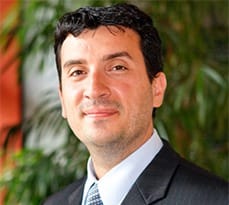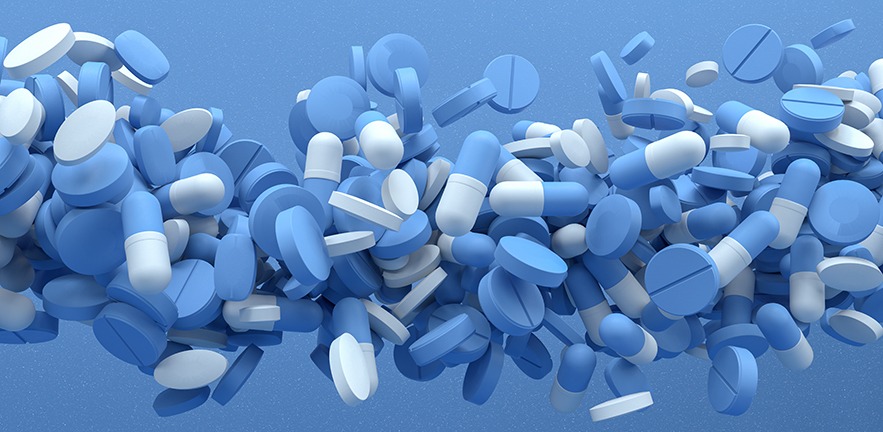Drug companies pay close attention to early-stage investment and testing by rivals, but only successful demonstrations of clinical proof of concept really matter, says new study co-authored at Cambridge Judge Business School.
As in all competitive industries, pharmaceutical companies carefully monitor investment and product testing by rivals to inform their own decisions. But is there a correlation between competitive signals and regulatory approval or commercial success of new medicines?
A recent study co-authored at Cambridge Judge Business School, based on more than 9,000 drug-development projects of the world’s top 15 pharma firms over a 17-year period, concludes that drug companies can overestimate the importance of information gleaned from rivals.
Looking at the effect on the focal pharma company (Firm A) of a rival firm’s (Firm B) portfolio, the researchers find that information prior to phase II completion by Firm B makes Firm A more likely to select a project for development (clinical trials). Yet, this decision is not linked to higher success probability (regulatory approval). Only when the rival Firm B successfully completes the phase II clinical testing of a substance targeting the same conditions as a new drug developed by Firm A does the likelihood of success significantly improve.
Early-stage information is irrelevant for a competing product’s success
“Although the information from rival projects in phases I and II influences a firm’s selection decision, it proves irrelevant for the project’s success,” concludes the study published in the journal Management Science. “This distinction between information signals on which firms act and those on which they should act bears a direct managerial implication from our analysis.”
So while pharmaceutical executives may naturally pay attention to headlines that a rival has committed tens of millions of dollars for early clinical trials of a drug that targets the same condition, “such information should be weighted less (or not at all) in their list of criteria”, the study says.
Firms should beware of introducing bias in their process by reading too much into the information conveyed by their rivals’ actions to progress a project into phase I or II. “The focal firm might have perfectly solid reasons to select a given drug for further development, but signals from rivals should not be one of them, at least until the rivals have successfully completed phase II.”
Use caution in assessing tests that target different conditions in the same area
Further, the study finds that even phase II clinical trial success of a rival’s “comparable” drugs within the same therapeutic area but targeting different conditions do not affect the chances of success of the focal drug firm’s project.


“A central message from the study is that drug development is uncertain and complex, and firms need to be cautious when reading into decisions taken by rivals – and this caution should be informed by the phase and ‘proximity’ in terms of indication and modality of the rival drugs,” says co-author Stelios Kavadias, Margaret Thatcher Professor of Enterprise Studies in Innovation & Growth and Vice-Dean for Faculty at Cambridge Judge Business School.
“In their pursuit of drug discovery, firms need to appropriately assess and act upon the signals that carry informational value, while acknowledging that for many of their development projects such information simply does not exist,” adds co-author Nektarios Oraiopoulos, Professor of Operations & Technology Management at Cambridge Judge.
Market rivalry signal and technological signal pull in opposite directions
The study identifies 2 types of information gleaned from rivals:
- a market rivalry signal, indicating potentially heightened competition in a market
- a technological signal, indicating a possibly efficacious solution to the treatment of the disease.
These 2 signals pull in opposite directions: heightened competition can prompt rivals to shy away from developing a new drug, while signs of clinical efficacy (technological viability) from a rival is associated with an increase in a project’s selection.
“The decision to allocate resources to a project ultimately requires the firm to balance a negative, market rivalry signal with a positive, technological signal,” the study says.
9,041 projects by 15 drug firms over 17 years
The study is based on the drug development pipelines of the top 15 pharmaceutical companies by sales from 1999 to 2016, which together had about $525 billion in revenues at the end of the study period. The sample studied consists of 9,041 projects (ranging from treatments for acne to Zollinger-Ellison syndrome, a rare digestive disorder) that were or were not selected for phase I; of 4,981 projects that entered clinical trials, 1,545 were still ongoing at the end of the study period, while 3,096 failed in clinical trials and 340 were approved by the US Food and Drug Administration (FDA).
(The 15 pharma firms were: AbbVie, Amgen, AstraZeneca, Bayer, Bristol-Myers Squibb, Eli Lilly, Gilead Sciences, GlaxoSmithKline, Janssen (Johnson & Johnson’s pharmaceutical division), Merck & Co., Novartis, Pfizer, Roche, Sanofi and Teva.)
The study’s conclusions reflect the high stakes and high uncertainty of pharmaceutical development: a new drug can be under development for 10 or 15 years, entering clinical trials that often cost hundreds of millions of dollars, and yet less than 10% of drugs entering clinical trials are approved as safe and effective by the FDA.
In the highly uncertain drug discovery space, unknowns vastly outnumber the knowns
“A drug that is highly effective for one disease can be completely ineffective for one that seems closely related,” says co-author Panos Markou, Assistant Professor of Business Administration at the University of Virginia’s Darden School of Business. “Simply put, despite the monumental progress of scientific research in the past few decades, when it comes to therapeutic pathways, the unknown parameters still vastly outnumber the known ones.”
An earlier version of the study won the Best Working Paper Awards of the Technology, Innovation Management and Entrepreneurship Section (TIMES) of INFORMS, the Institute for Operations Research and the Management Sciences.
The study
The study in Management Science – entitled “Rival signals and project selection: insights from the drug development process” – is co-authored by Panos Markos of Darden School of Business at the University of Virginia; Stelios Kavadias, Margaret Thatcher Professor of Enterprise Studies in Innovation & Growth and Vice-Dean for Faculty at Cambridge Judge Business School; and Nektarios Oraiopoulos, Professor of Operations & Technology Management at Cambridge Judge.


